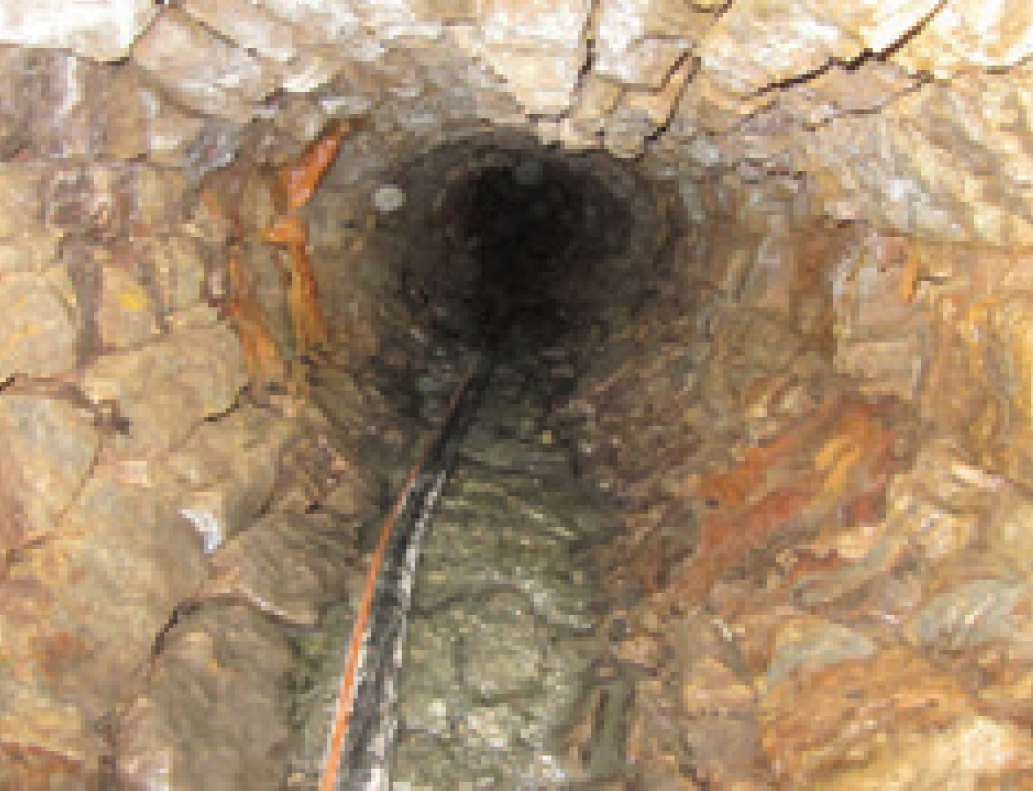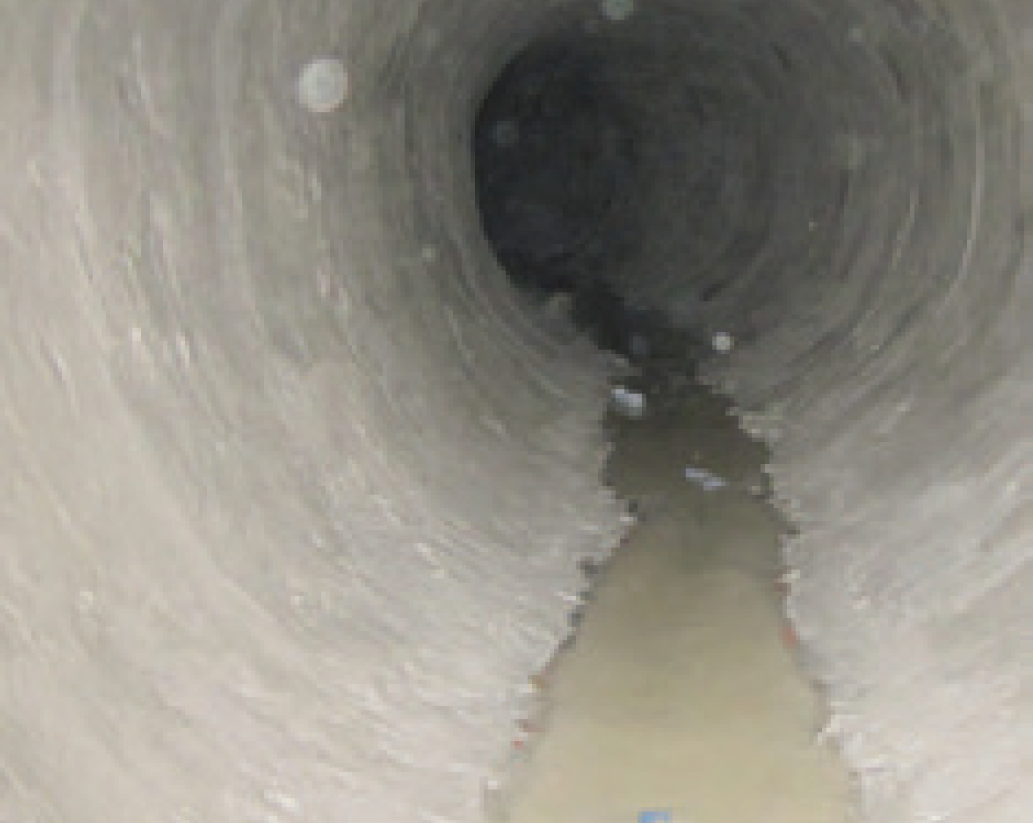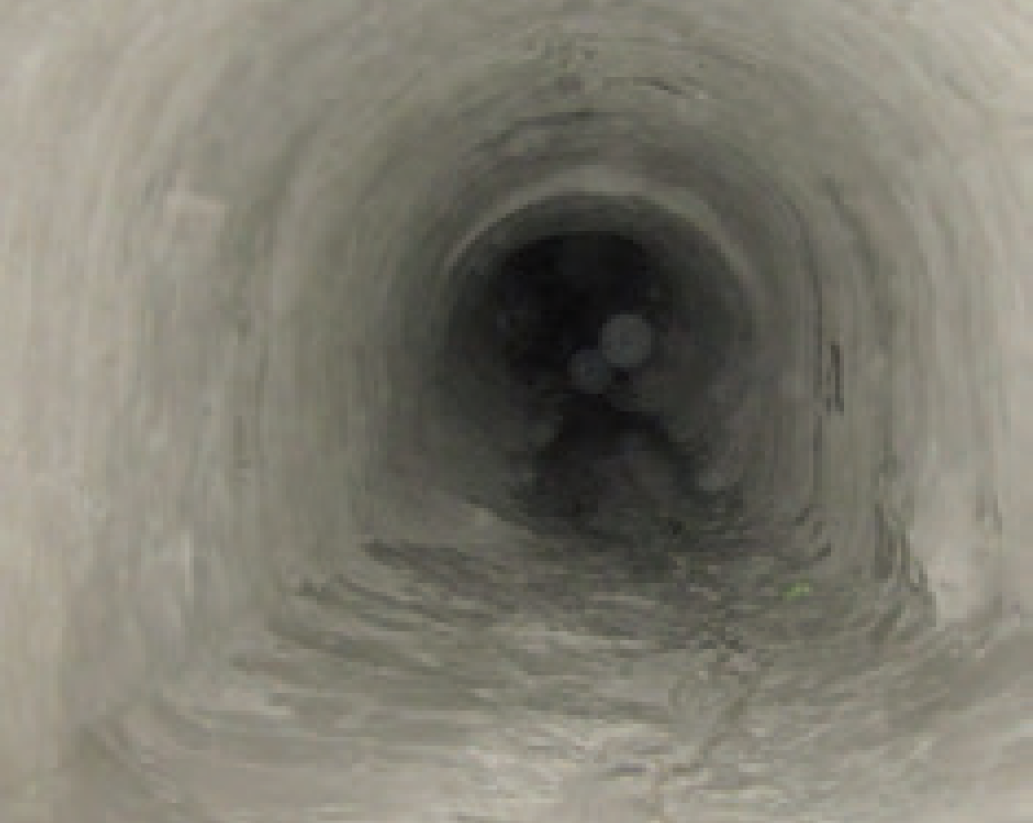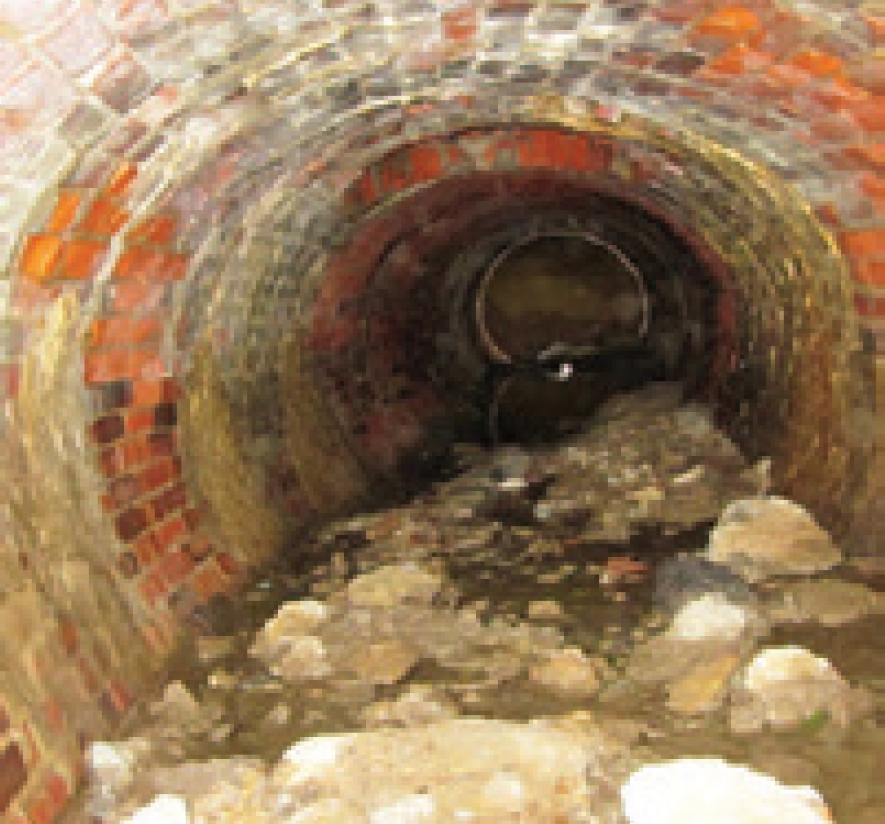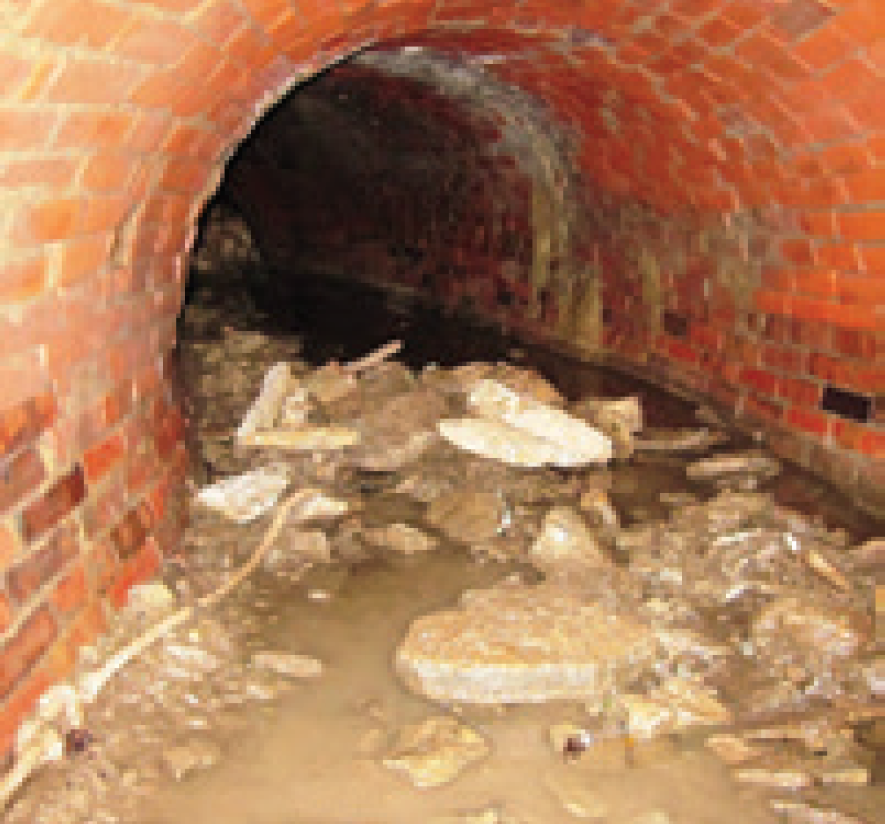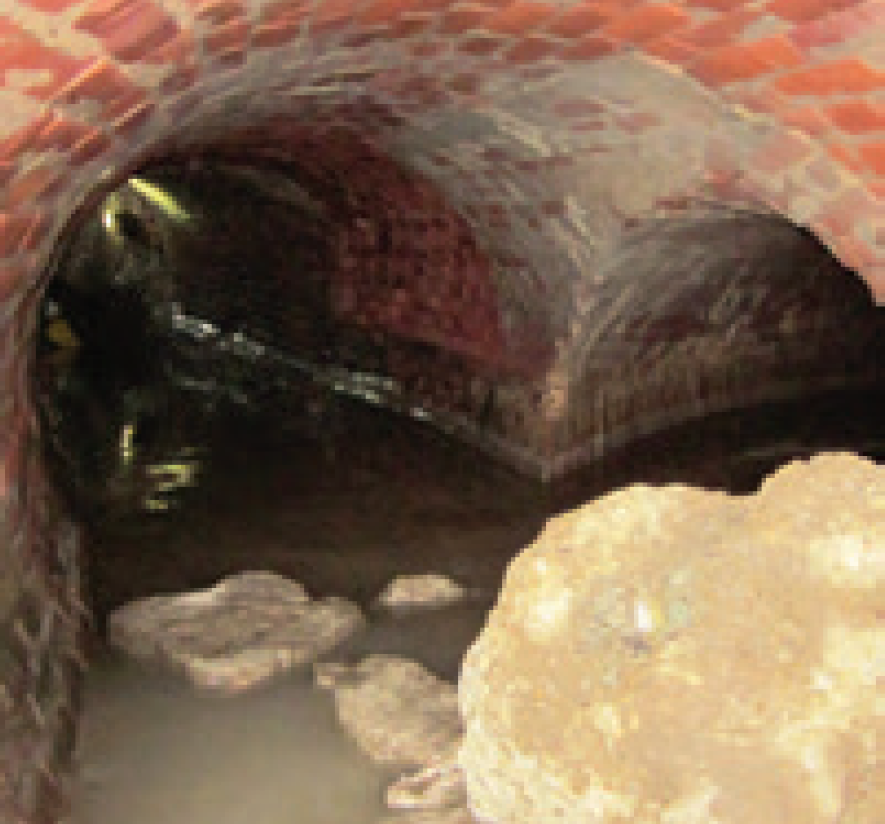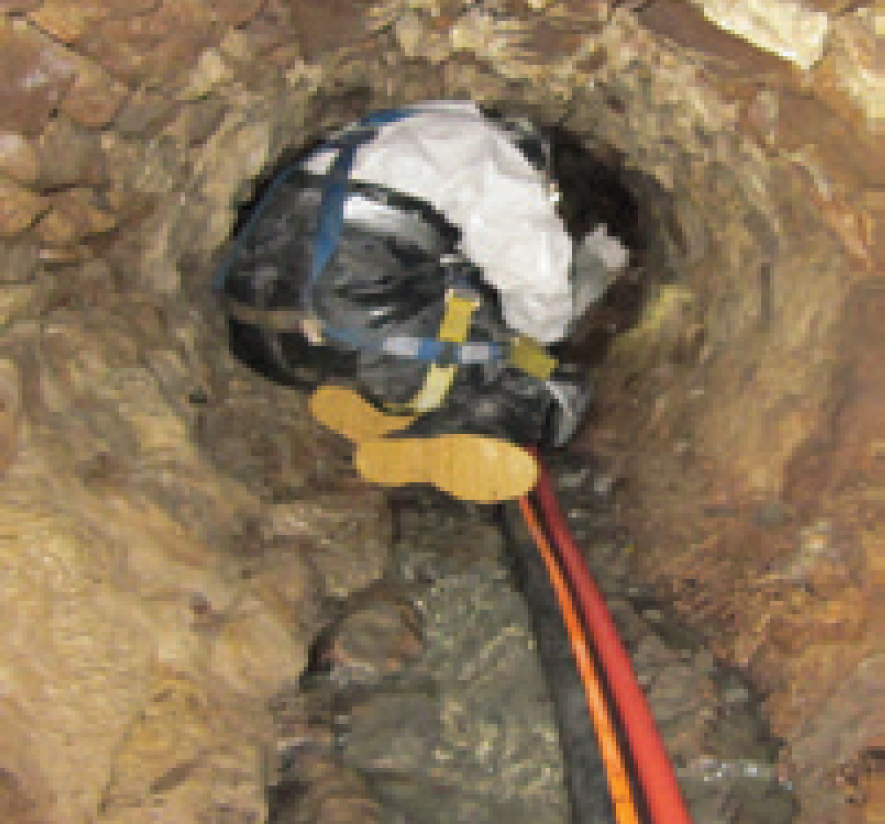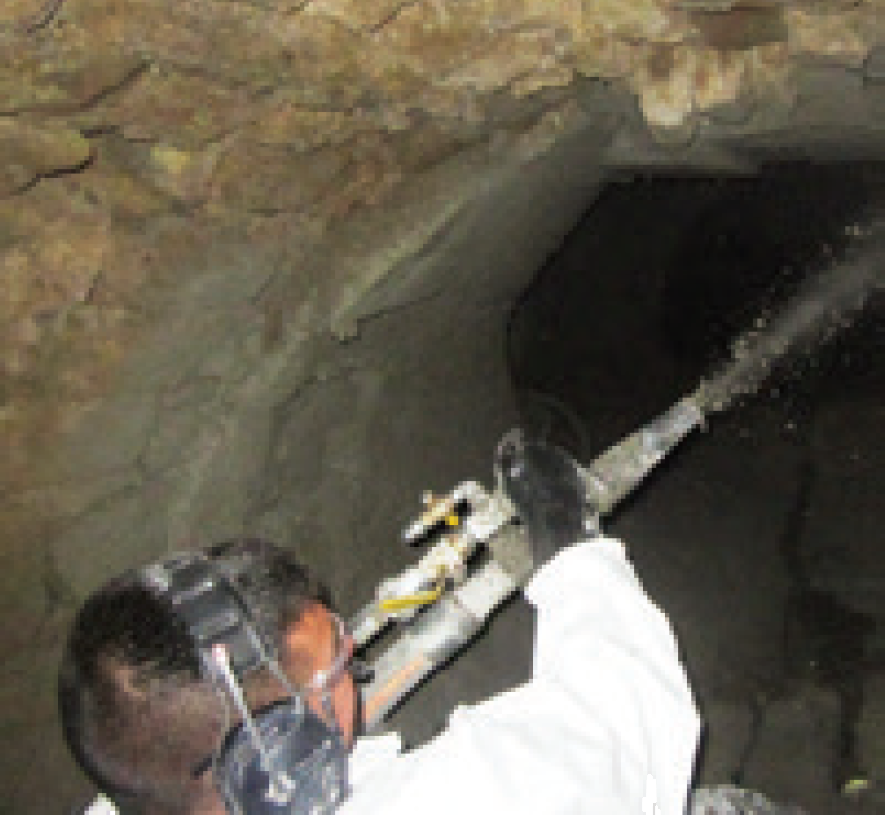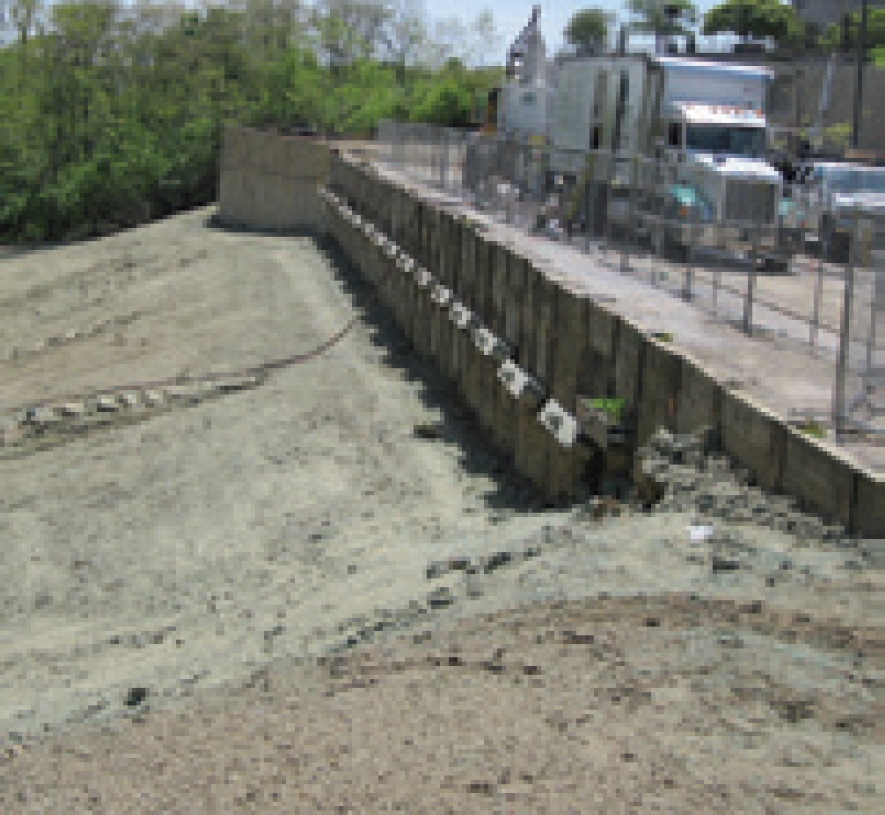WATER/WASTEWATER
PROJECT OVERVIEW
During an assessment of its combined sewer system, the Metropolitan Sewer District of Greater Cincinnati (MSD) discovered that an 800-foot section of stacked stone and brick sewer line, situated in an area with active natural springs, was badly leaking. Records indicated that the old stone pipe was likely installed in phases between 1870 and 1890.
This specific section of stone pipe presented a host of unique challenges. One section of the pipe was on a 26-degree slope that led to a river outfall. A detailed inspection revealed that the pipe had both round and arched cross sections with two different diameters. One 500-foot section had an inner diameter of approximately 60 inches and a separate 300-foot section had a 36-inch diameter.
Access to the pipe itself was also a challenge. The old sewer ran beneath three sets of road crossings, all at different elevations. Additionally, the pipe was also located near the University of Cincinnati campus, which made minimizing surface disruption a high priority.
SOLUTION
In reviewing its options to address the deteriorated pipe, the MSD quickly realized that replacement was not a viable option because of the pipe’s depth and location. When considering alternative trenchless methods a number of options were evaluated, including cured-in-place pipe (CIPP) and slip-lining. CIPP was not a viable solution due to the variation of the pipe’s different shapes and sizes, the steep slope and the rough protruding stone. Slip-lining of the pipe was a poor option for the same reasons, and would have required digging several large access pits, resulting in significantly reduced flow capacity. In the end, the MSD chose to apply a GeoSpray geopolymer lining that would be both hand-and machine-sprayed to create a new structural lining, repair the leaking and return the pipe to its original shape.
Construction on the site began in March 2012. The first task was to clean the stone pipe with a high pressure wash and then to use a hand-spray application of GeoSpray geopolymer to both stop the leaking and stabilize the existing stone structure.
One critical advantage of centrifugally spraying a GeoSpray geopolymer lineris the equipment footprint can be limited to the size of approximately two 24-foot box trucks, and spraying can occur more than 200 feet from the actual mixing location. This allowed the crew to avoid causing any traffic disruption.
Once the initial hand spray was complete, a mechanical sled system was
used to apply the final coats and arrive at the engineer’s required thickness,
allowing for a new structural pipe to be built within the existing pipe.
RESULTS
The pipe and weather presented many challenges. The temperature above ground during the installation period ranged from just above freezing to highs in the mid-seventies. These large temperature swings are no problem for GeoSpray geopolymers, which helped keep the project on schedule. The full project was completed in under six weeks - ahead of schedule and on budget.
PROJECT DETAILS
Application: Sanitary Sewer Rehabilitation
Client: Metropolitan Sewer District of Greater Cincinnati
Location: Cincinnati, OH
Installation: April 2012
Installer: Inland Pipe Rehab, LLC
